When we think of prehistoric life, towering dinosaurs often dominate our imagination. However, beneath the ancient waves swam a diverse ecosystem of marine creatures living alongside their terrestrial counterparts. Remarkably, many fossils of fish, crustaceans, and other sea creatures have been discovered in the same geological formations as dinosaur remains. These marine fossils provide a crucial window into the complete ecological picture of the Mesozoic Era (252-66 million years ago).
From perfectly preserved fish showing intricate scales to crabs frozen in time with their claws still intact, these marine fossils tell a fascinating story of life in ancient oceans while dinosaurs roamed nearby shorelines. Their discovery and study have revolutionized our understanding of prehistoric marine biodiversity and the interconnected nature of ancient ecosystems.
The Mesozoic Marine World: An Overview
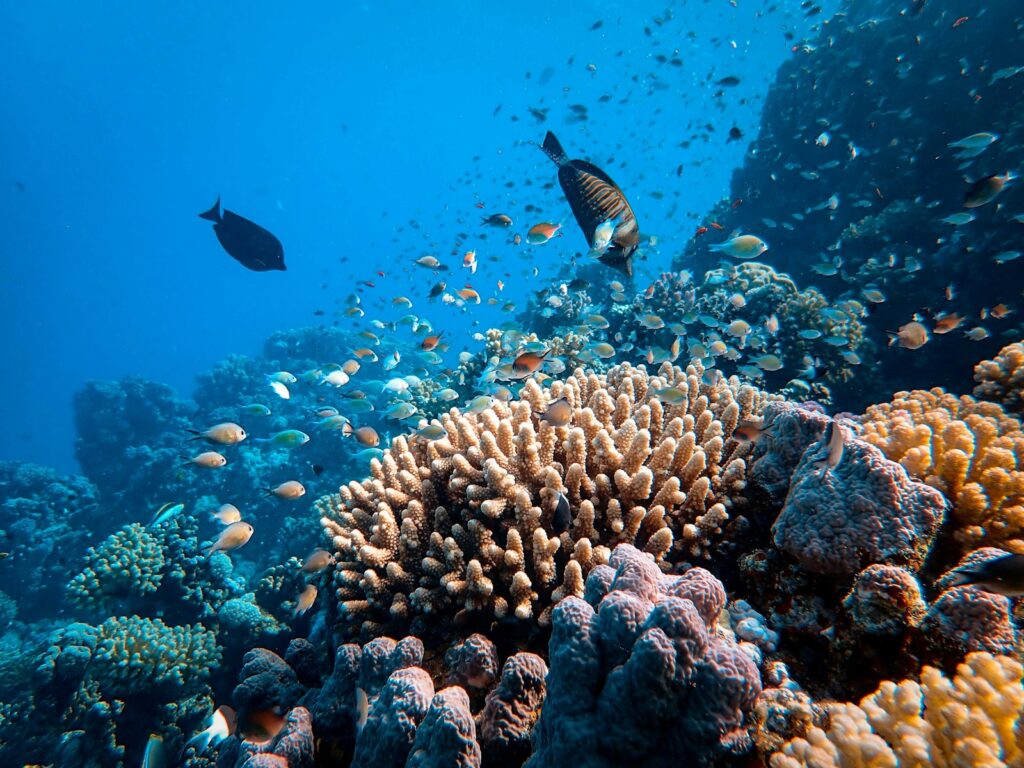
While dinosaurs dominated terrestrial environments during the Mesozoic Era, the oceans teemed with an equally impressive array of life forms. The Mesozoic seas were home to a remarkable diversity of creatures, including primitive sharks, ray-finned fishes, ammonites, massive marine reptiles, and countless invertebrates like crabs and mollusks. This marine ecosystem underwent significant transformations throughout the Triassic, Jurassic, and Cretaceous periods, influenced by continental drift, changing sea levels, and global climate fluctuations.
The marine fossil record reveals major evolutionary innovations during this time, including the appearance of modern fish groups and the development of new ecological niches. Importantly, many marine fossil deposits occur in the same geological formations as dinosaur remains, highlighting how these diverse ecosystems existed simultaneously across the prehistoric Earth, connected through intricate ecological relationships and food webs.
Famous Marine-Dinosaur Fossil Localities

Several remarkable fossil sites around the world preserve both dinosaur remains and marine creatures in close proximity. The Jurassic Coast of England offers spectacular examples, with marine reptiles, fish, and ammonites found alongside dinosaur fossils in the same geological formations. The Hell Creek Formation in Montana contains not only the famous Tyrannosaurus rex but also fossils of freshwater fish, shellfish, and other aquatic organisms that lived in the region’s ancient rivers and lakes.
In Morocco’s Kem Kem Beds, paleontologists have unearthed fossils of massive predatory dinosaurs alongside ancient sharks, lungfish, and coelacanths, revealing a complex ecosystem where terrestrial and aquatic realms intersected. Perhaps most striking is the Santana Formation in Brazil, which preserves exquisitely detailed fish fossils with soft tissue impressions alongside pterosaurs and dinosaur remains. These localities demonstrate how neighboring terrestrial and aquatic environments were preserved together, giving scientists a more complete picture of ancient ecosystems.
The Remarkable Preservation of Marine Fossils
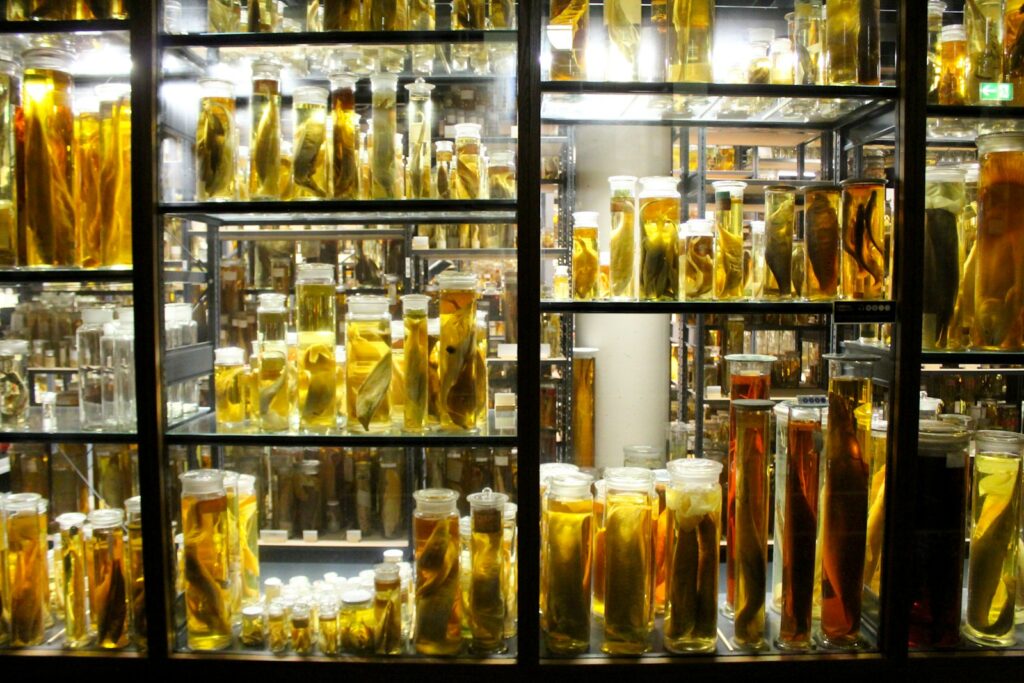
The exceptional preservation of marine fossils found alongside dinosaur remains often results from specific geological and environmental conditions. Many marine creatures became fossilized through rapid burial in oxygen-poor sediments, which prevented decomposition and scavenging. This process, known as conservation lagerstätten, preserves even delicate features like scales, fins, and sometimes internal organs.
The fine-grained limestone deposits of Germany’s Solnhofen region exemplify this preservation, containing exquisitely detailed fish fossils alongside the famous Archaeopteryx dinosaur. Some marine fossils exhibit three-dimensional preservation when minerals rapidly infiltrate their tissues before significant decomposition occurs.
The preservation quality of these marine fossils frequently surpasses that of their dinosaur counterparts due to the protective nature of underwater environments and the rapid sedimentation that often occurs in marine settings. These pristine specimens provide paleontologists with unprecedented insights into ancient marine anatomy, diversity, and ecological relationships.
Ray-Finned Fishes: Diverse Contemporaries of Dinosaurs

Ray-finned fishes (Actinopterygii) experienced a remarkable evolutionary explosion during the Mesozoic Era, diversifying into numerous forms while dinosaurs ruled the land. These fish, characterized by bony fin rays supporting their fins, represent the most diverse group of vertebrates today, and their fundamental diversification occurred alongside dinosaur evolution.
Fossil deposits from the Jurassic and Cretaceous periods reveal an astonishing variety of ray-finned fish forms, from small reef-dwelling species to large predatory types with fearsome teeth. The Green River Formation in Wyoming preserves thousands of pristine fish fossils from the early Eocene (shortly after the dinosaurs’ extinction), showing the continued success of these lineages.
Many modern fish groups, including salmon, cod, and perch, trace their evolutionary roots to ancestors that swam in oceans while dinosaurs roamed nearby shores. The abundance of well-preserved ray-finned fish fossils provides crucial data for understanding vertebrate evolution and adaptation during this pivotal time in Earth’s history.
Sharks and Rays: Ancient Cartilaginous Predators

Sharks and rays already had a long evolutionary history by the time dinosaurs appeared, having evolved more than 400 million years ago. During the Mesozoic, these cartilaginous fishes underwent significant diversification, evolving various specialized forms while maintaining their fundamental body design. Unlike bony fish and dinosaur skeletons, the cartilaginous skeletons of sharks and rays typically don’t fossilize well, leaving primarily teeth, scales (dermal denticles), and occasionally calcified vertebrae in the fossil record.
Remarkably preserved shark fossils from the Cretaceous period, such as those found in Kansas and Lebanon, show that many ancient sharks closely resembled modern species in their overall appearance. The Squalicorax genus, nicknamed “crow sharks,” were common predators in Cretaceous seas and their teeth are frequently found in marine deposits associated with dinosaur-bearing formations. These ancient sharks likely scavenged on dinosaur carcasses that washed out to sea, as evidenced by dinosaur bones bearing distinctive shark tooth marks from this period.
Crustaceans: Crabs, Lobsters, and Their Relatives
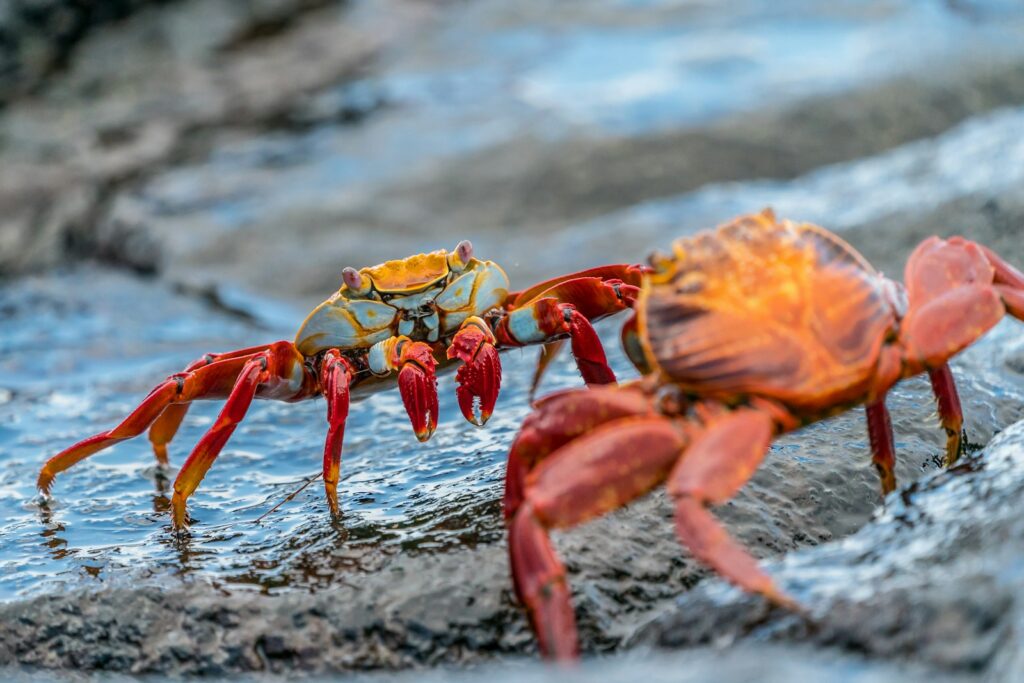
Crustacean fossils from the Mesozoic Era provide fascinating glimpses into the ancient relatives of modern crabs, lobsters, shrimps, and barnacles that lived alongside dinosaurs. These arthropods had already established many of their fundamental body plans by the early Mesozoic, but underwent significant diversification during this time period.
Exquisitely preserved crab fossils from Late Jurassic and Cretaceous deposits show remarkable similarities to modern forms, indicating the evolutionary success and stability of their basic body design over millions of years. The Solnhofen Limestone in Germany has yielded spectacularly preserved lobster and crab specimens that lived in the same ecosystems as Archaeopteryx and other dinosaurs.
Some crustacean fossils even preserve delicate appendages, antennae, and eye stalks, providing detailed information about their anatomy and ecological roles. These findings demonstrate that while dinosaurs evolved dramatically on land, crustaceans were establishing the foundation for the diverse seafood menu we enjoy today, with many Mesozoic forms being recognizable ancestors to species that still inhabit our oceans.
Ammonites and Other Mollusks

Ammonites, with their distinctive spiral shells, represent some of the most recognizable and abundant marine fossils found in rocks of the same age as dinosaur remains. These cephalopod mollusks were close relatives of today’s nautilus, octopus, and squid, and they dominated the Mesozoic seas in extraordinary diversity and numbers.
Their evolution closely paralleled that of dinosaurs, with both groups appearing in the Triassic, diversifying dramatically in the Jurassic, and experiencing a catastrophic extinction at the end of the Cretaceous period. Ammonite shells, composed of calcium carbonate, preserve exceptionally well and serve as important index fossils for dating rock formations, helping paleontologists correlate marine deposits with dinosaur-bearing terrestrial rocks.
Beyond ammonites, other mollusks like bivalves (including ancestors of modern clams and oysters) and gastropods (snails) were incredibly abundant in Mesozoic seas. The distinctive iridescent mother-of-pearl layer found in many fossil ammonites, known as nacre, often preserves the original shell material rather than being replaced by minerals, allowing scientists to conduct isotopic analyses that reveal ancient ocean temperatures and chemistry.
Marine Reptiles: Not Dinosaurs But Contemporaries
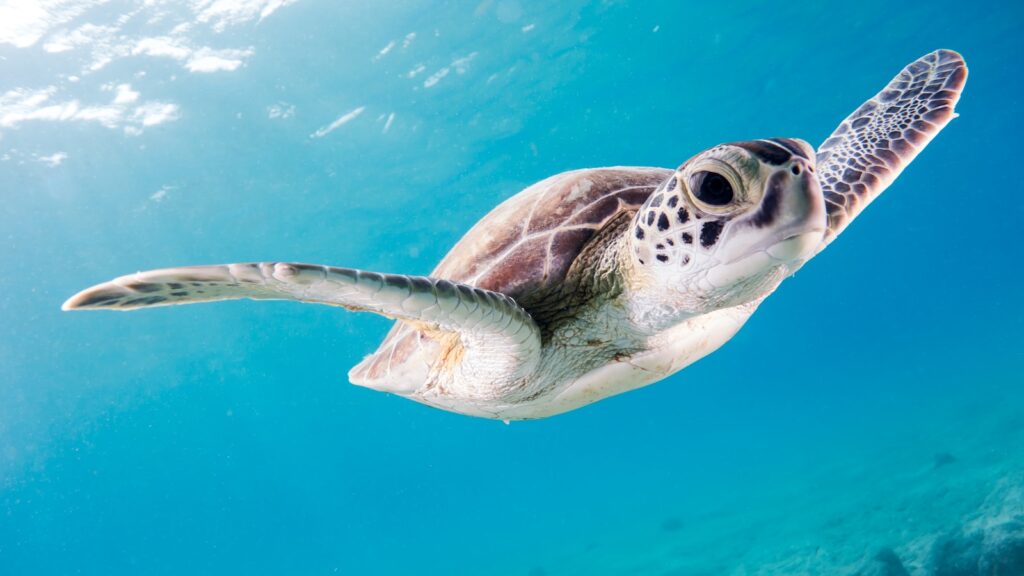
While not dinosaurs themselves, various marine reptiles evolved to dominate ocean ecosystems during the Mesozoic Era alongside their terrestrial dinosaur cousins. Ichthyosaurs, with their dolphin-like body shape and massive eyes, ruled the early to middle Mesozoic seas as swift predators pursuing fish and cephalopods. Plesiosaurs, with their long necks and paddle-like limbs, evolved diverse feeding strategies throughout the Jurassic and Cretaceous periods, filling various ecological niches.
Mosasaurs, massive marine lizards that could reach lengths exceeding 50 feet, became the apex predators of Late Cretaceous oceans, essentially serving as the marine equivalent to Tyrannosaurus rex. These marine reptiles frequently appear in the same fossil formations as fish, crustaceans, and other sea creatures, telling a comprehensive story of ancient marine food webs.
Unlike dinosaurs, which evolved from land-dwelling ancestors and remained primarily terrestrial, these marine reptiles represent multiple separate reptile lineages that independently returned to the sea, adapting to aquatic life while their dinosaur relatives continued evolving on land.
Freshwater Finds: Lake and River Creatures Among Dinosaurs
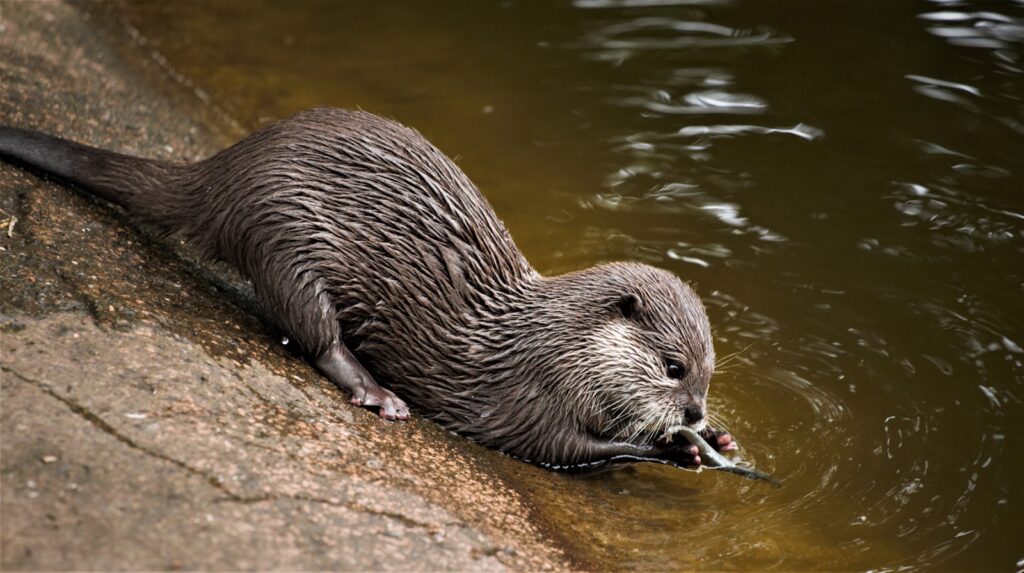
Not all aquatic fossils found with dinosaurs come from marine environments; many freshwater creatures have been discovered alongside dinosaur remains in ancient lake and river deposits. Freshwater fish fossils, including primitive relatives of modern gars, bowfins, and sturgeons, frequently appear in the same sedimentary layers as dinosaur bones, telling stories of the ancient waterways these terrestrial giants relied upon. The Hell Creek Formation, famous for its Tyrannosaurus and Triceratops fossils, also preserves numerous freshwater ray-finned fishes, sharks, turtles, and even crocodilians that shared these ancient river systems with dinosaurs.
Invertebrates like freshwater mussels, snails, and crayfish appear in these same deposits, indicating complex freshwater ecosystems existed where dinosaurs came to drink, feed, and cool themselves. These freshwater fossils assemblages provide crucial evidence of direct ecological interactions between dinosaurs and aquatic life, with some dinosaur remains showing bite marks from ancient crocodilians, while fish fossils sometimes appear in dinosaur stomach contents, revealing predator-prey relationships that spanned the water-land boundary.
Microfossils: The Overlooked Ocean Dwellers

Beyond the spectacular large fossils that capture public attention, microscopic marine organisms found in dinosaur-age rocks tell an equally important story of ancient ocean ecology. Foraminifera, diatoms, radiolarians, and coccolithophores—single-celled organisms with intricate mineral skeletons—formed the foundation of Mesozoic marine food webs, just as their descendants do in modern oceans.
These microfossils appear by the billions in fine-grained marine sediments from the Mesozoic, providing crucial data about ancient ocean temperatures, chemistry, and productivity. The microscopic remains of planktonic organisms often accumulate to form entire rock formations, such as the famous White Cliffs of Dover, composed primarily of coccolithophores from the Cretaceous period.
Studies of oxygen isotope ratios in these microfossils have helped scientists reconstruct sea surface temperatures during the age of dinosaurs, revealing warming and cooling trends that influenced both marine and terrestrial ecosystems. Because these microscopic organisms evolved rapidly and were globally distributed, their fossils serve as excellent biostratigraphic markers, helping scientists precisely date and correlate marine and terrestrial rock formations worldwide.
Ecological Connections Between Land and Sea

The discovery of marine fossils alongside dinosaur remains illuminates the complex ecological connections that existed between terrestrial and marine environments during the Mesozoic Era. River deltas and coastal environments preserved in the fossil record show how nutrients flowed from land to sea, with dinosaur remains occasionally washing out to become food for marine scavengers.
Some dinosaurs, like the fish-eating Spinosaurus, directly exploited aquatic resources, creating direct predatory links between terrestrial and aquatic ecosystems. Examination of marine sediments from dinosaur times reveals increased erosion and runoff during periods of dinosaur dominance, suggesting these large herbivores significantly impacted vegetation cover and consequently affected marine environments through altered sedimentation patterns.
Isotopic studies of marine and terrestrial fossils from the same time periods allow scientists to track carbon and nitrogen cycling between land and sea ecosystems, revealing interconnected biogeochemical processes. These ecological connections remind us that dinosaurs didn’t exist in isolation but were part of complex, interconnected global ecosystems that included diverse marine communities responding to the same environmental changes and evolutionary pressures.
The K-Pg Extinction: Different Fates for Marine and Terrestrial Life

The Cretaceous-Paleogene (K-Pg) extinction event 66 million years ago, triggered by a massive asteroid impact, affected marine and terrestrial organisms in strikingly different patterns. While all non-avian dinosaurs perished completely, marine ecosystems experienced more selective extinction patterns, with certain groups devastated while others survived relatively unscathed.
Large marine reptiles like mosasaurs and plesiosaurs disappeared entirely, sharing the fate of their dinosaur contemporaries on land. Ammonites, which had thrived for millions of years alongside dinosaurs, faced complete extinction, while their relatives, the nautiloids, managed to survive to the present day. Many fish lineages weathered the extinction remarkably well, particularly those in freshwater environments that were somewhat buffered from the global oceanic changes.
The varying extinction rates across marine groups created ecological vacancies that allowed surviving lineages to diversify dramatically in the post-dinosaur world, leading to the rise of modern marine ecosystems dominated by teleost fishes, modern sharks, and mammals like whales that evolved to fill the ecological niches once occupied by extinct marine reptiles.
Modern Research Technologies and Future Discoveries

Cutting-edge technologies are revolutionizing our understanding of ancient marine life that existed alongside dinosaurs. CT scanning allows paleontologists to examine the internal anatomy of marine fossils without damaging specimens, revealing previously hidden structures like brain cases and inner ear canals of ancient fish. Advanced microscopy techniques enable scientists to study the microstructure of fossilized fish scales and crustacean shells, providing insights into their growth patterns and life histories.
Geochemical analyses of marine fossils, particularly stable isotope studies, help reconstruct ancient ocean temperatures, salinity levels, and food web dynamics during the dinosaur Era. Molecular paleontology, though challenging with very ancient specimens, occasionally yields preserved organic molecules from exceptionally preserved fossils, offering glimpses of the biochemistry of extinct marine organisms.
These technological advances promise to enhance our understanding of marine ecosystems during the dinosaur era, with ongoing excavations and analyses constantly revealing new species and ecological relationships that existed in the ancient oceans. Future research will likely focus on integrating marine and terrestrial fossil data to create more comprehensive models of Mesozoic ecosystems and their responses to environmental changes over time.
Conclusion: A Complete Picture of Prehistoric Life
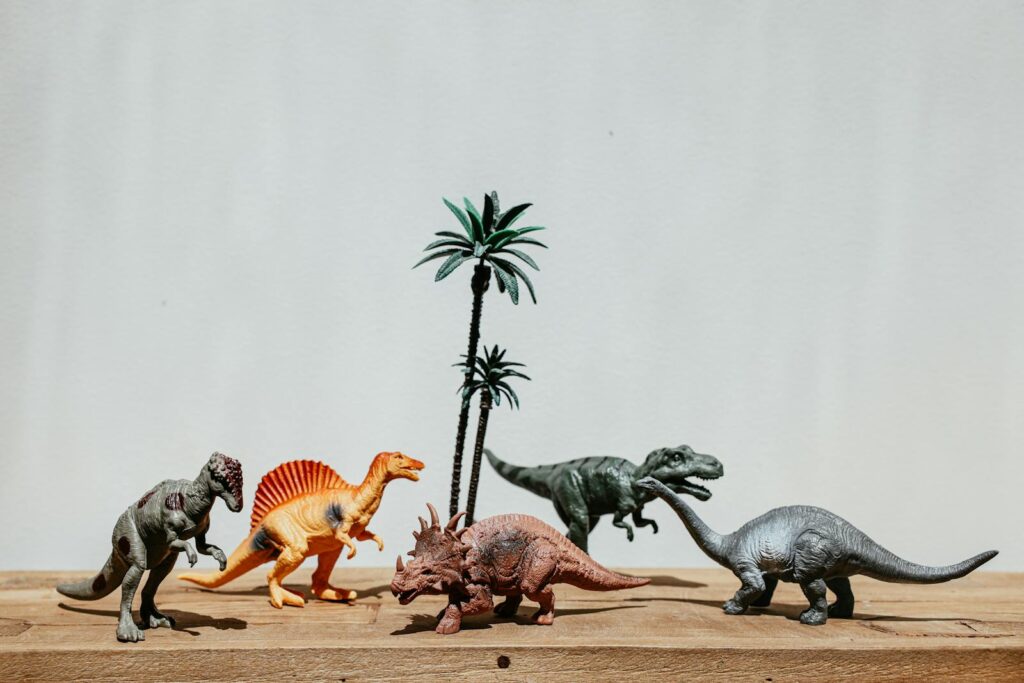
The study of marine fossils found alongside dinosaur remains provides essential context for understanding the complete ecological tapestry of the Mesozoic Era. While dinosaurs have captured public imagination for generations, the diverse marine creatures that swam, crawled, and drifted through ancient oceans represent equally important threads in the fabric of Earth’s evolutionary history.
From microscopic plankton to massive predatory sharks and everything in between, these marine organisms formed complex ecosystems that interacted with and influenced terrestrial environments where dinosaurs roamed. The preservation of both marine and terrestrial fossils in the same geological formations offers rare opportunities to examine how different ecosystems responded to shared environmental challenges and evolutionary pressures.
As research continues with ever-more sophisticated tools and techniques, our understanding of the relationship between dinosaur-dominated lands and their contemporary oceans grows increasingly nuanced and complete. These ancient marine creatures remind us that dinosaurs were just one component of a rich planetary biodiversity that spanned all environments—a perspective that enriches our appreciation of Earth’s dynamic evolutionary history.




